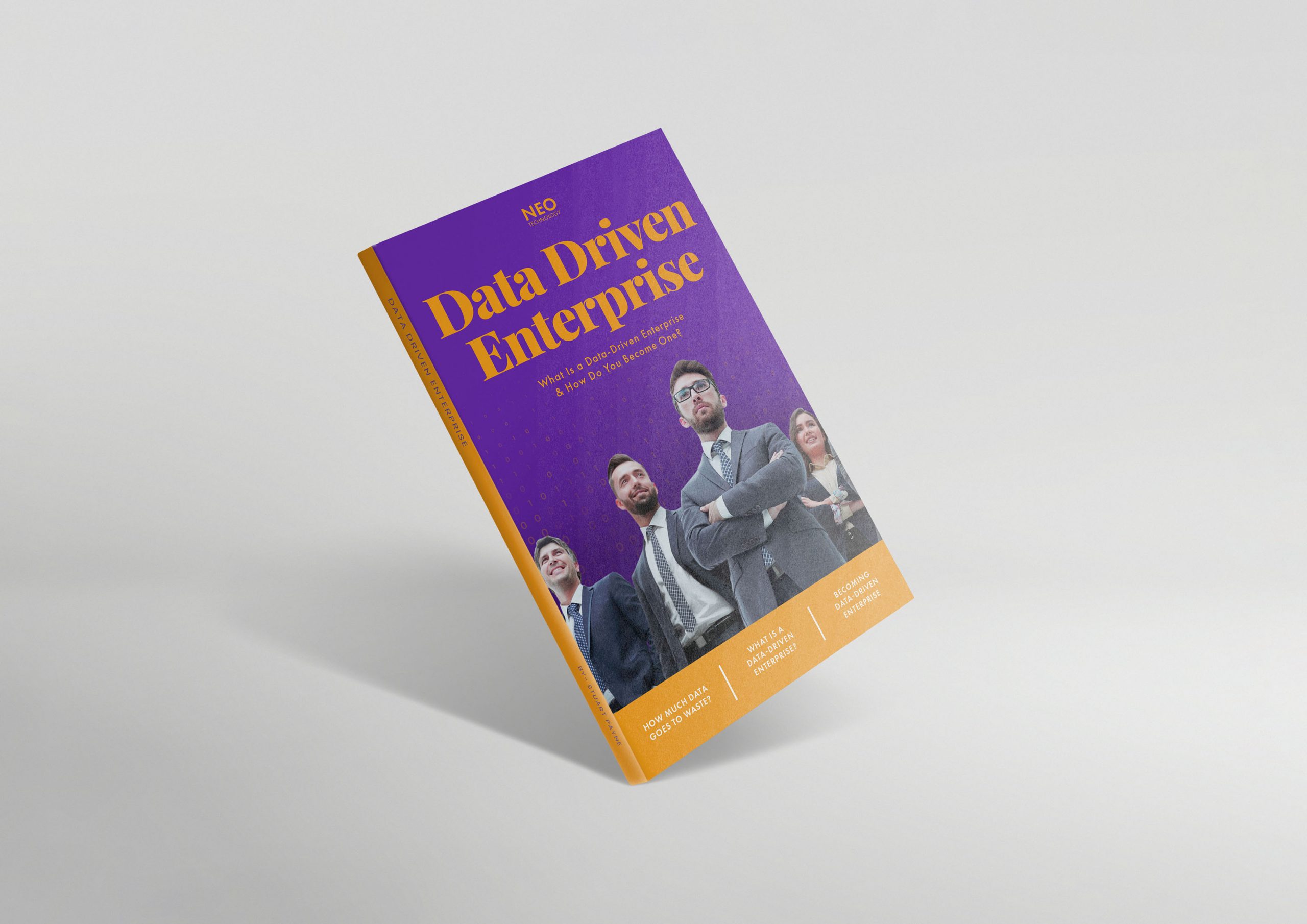How to Become a Data Driven Enterprise
Join our community who have learnt how to deploy technology faster and have been enabled to disrupt their sector to deliver better customer service and growth.
What is a Data Driven Enterprise and How Do You Become One?
Data is power. AI, Machine Learning and Cloud technologies allow businesses to make data-led decisions that ensure business scalability, agility and growth.
In a world where over 90% of all data ever has been generated in the last five years and 5 quintillion bytes of data are created globally each day, many organisations still struggle to process and leverage the vast quantities of data at their disposal.
This leads to wasted resources, lost potential and reduced competitive advantage.
In order to optimise the value of data, organisations need to focus on becoming primarily data-driven.
We work with organisations in the public and private sectors to form a cohesive strategy, clear targets, a solid definition of success, a sizeable budget and a road map to get them there. Data is a vital asset that brings huge ROI opportunities, but only if companies commit to a culture that values the power of data.

How Much Data Goes to Waste?
According to Gartner, 97% of data goes unused by organisations. Gartner also notes that 87% of organisations are classified as having low maturity levels in terms of their business intelligence and analytics capabilities. As the economy becomes ever more reliant on Big Data and advanced analytics, lack of data maturity can severely restrict a business’ growth and sustainability.

Unearthing the Potential of Data Insights
There is a direct link between high business performance and being a ‘data-driven enterprise,’ and data-driven companies are clearly outpacing their competitors in terms of profitability and customer engagement.
Did you know that 71% of digital-first organisations say they attract new talent based on their use of data?
We help our client organisations to use data to innovate, create new sources of revenue, reduce risks and make informed critical decisions through the use of AI and analytics. Data-driven enterprises are defined by optimisation, continuous improvement and an insights-driven culture.
Discover What We Do

What Are the Biggest Challenges Facing Companies in Becoming Data-Driven?
Despite years of investment and a global pandemic that shifted much of the economy online, many organisations have struggled to sustain their data strategies. Did you know that 72% of large companies have been unable to create a data-driven culture?
A common problem in the modern workplace is the inability or unwillingness of employees to embrace available data.
When staff are comfortable with old legacy systems and are insufficiently upskilled, they may feel threatened by digital change.
According to the Harvard Business Review, 77% of executives say that business adoption of data analytics initiatives such as Big Data and AI is a major challenge.
Many organisations lack data-driven enterprise architecture and therefore struggle to manage data that comes from a wide variety of platforms, departments and external sources, often received in different formats. Due to a lack of resources and skill sets, employees often have to untangle a myriad of disparate and unconsolidated data, using arduous manual processes. This can lead to confusion about where the data came from and what its use would be, which causes teams to distrust data, and by extension advanced analytics and tools.
As digital businesses are awash with many types of internal and external data, many of them lack the centralised, consolidated architecture needed to prevent a data overload. To ensure that opportunities for insights are seized, our specialists work with you to deploy new technologies such as automation, AI, Machine Learning and Data Lakes that allow relevant data to be extracted seamlessly.
Becoming a data-driven enterprise is not a simple, overnight manoeuvre. It is a step-by-step process that can take years and requires upskilling and changes in culture and technologies. We deliver the clear data strategy, modernised data architecture and the teams to build and manage it, ensuring quick Return-on- Investment (ROI) and long-term success for your organisation.

What is the Best Strategy for Becoming a Data Driven Enterprise?
Unanimous support and funding from the leadership is essential. Our in-country project management leaders and global teams join you on every step of the way so that you truly know the scale of the project you are about to undertake, how long it will take and when to expect ROI.
As third-party collaborators, our (free) discovery sessions and clear planning gives clients the confidence in the teams involved in the project, empowering workers to succeed in their mission.
We embrace and nurture a functioning collaborative culture where data sharing is paramount, for no department is an island in a data-driven enterprise. All departments are aligned on the road map to ensure accountability and transparency.
To create a viable analytics strategy we focus on automating processes with AI and advanced analytics. We ensure that your colleagues can understand the data they are presented with so that it is digestible and can be leveraged to support the company’s decision-making process.
To map your analytics strategy, we use data from previous years as a benchmark for comparison – this is a great way to track your organisation’s progress.
Above all else, we upskill your workforce to make sure no one gets left behind by technological change. Data scientists are in such high demand at the moment because of the digital skills gap. It is more efficient and economical to empower your teams to interpret different forms of data correctly.
Employees need both the tools and the skills for accurate data analysis and presentation.

What is a Data Lake and What Are Its Benefits?
First conceived in 2010, the Data Lake serves as a depositary that houses various forms of data from applications within an organisation in their native format. The Data Lake allows analysts to locate and utilise large quantities of data accurately and at pace. Though Data Lakes were originally built for on-premises systems, the rise of Cloud services enabled companies to build and manage Data Lakes using affordable infrastructure.
Our specialists design and build Data Lakes to allow your organisation to convert raw unstructured data into standardised, structured formats, from which you can apply data science, Machine Learning and AWL analytics with minimal latency. With the guidance and oversight of our specialists, Data Lakes will enable you to scale out by adding more machines to your pool of resources.
We help our clients to move with the times by incorporating modern Data Lake designs that match the demands of today’s data-driven economy.
Building the Right Data Systems
When it comes to handling data, businesses are held back by outdated legacy systems, causing slower data transformation cycles that eat into sales and productivity. For the benefit of all stakeholders, businesses need to ditch their old data sourcing methodologies for modernised, future-proof and flexible data architecture.
To achieve this, Cloud-based solutions are required. By migrating systems to the Cloud, companies will be able to harness data in real time and half their processing time which, in turn, will accelerate their productivity, growth and speed-to-market.
If your organisation is stuck with on-premises systems, we can help you shift those heaps of data to the Cloud safely and securely with minimal server downtime. In a world of limitless data, where 2.5 billion gigabytes are produced each day, on-premises systems are simply unscalable and therefore, redundant.
With our Cloud expertise, a Cloud-based data fabric will give your businesses the data-driven insights you need. Thanks to AI and agile DataOps, companies like yours will be able to achieve real-world results from their data at greater pace than ever before in their history.


